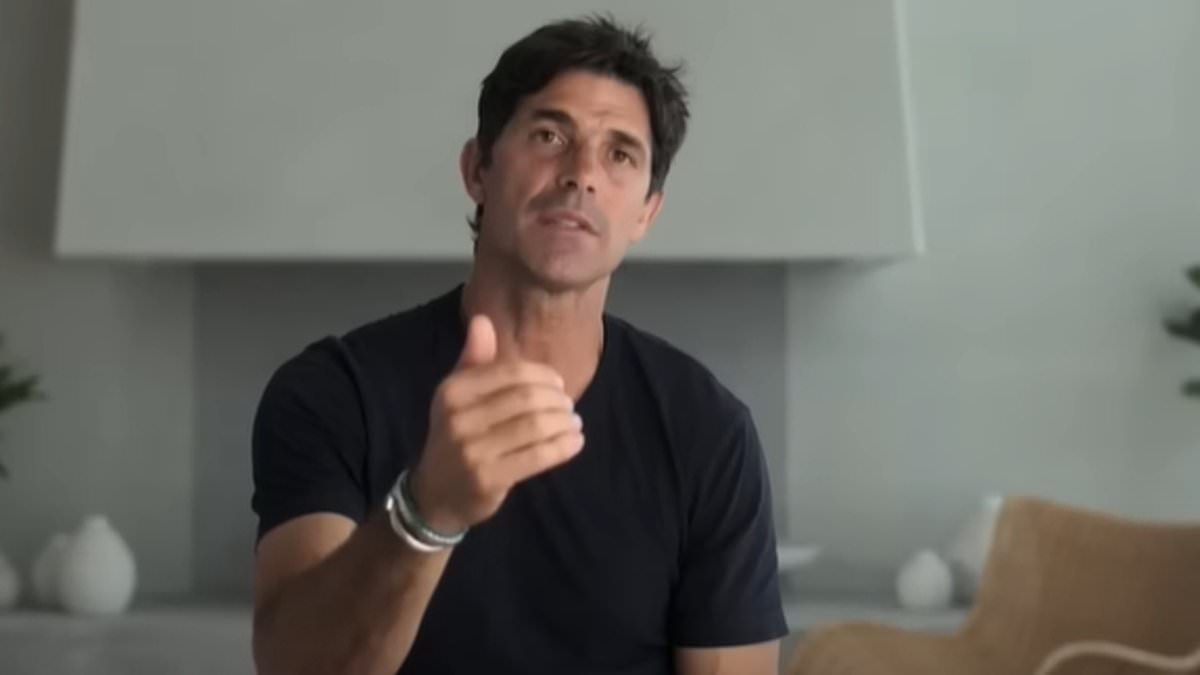The Tower of London hosted the executions of more than 100 people during the Tudor reign.
Henry VIII famously killed two of his wives, including Anne Boleyn, after they failed to produce male heirs.
But one of the lesser known tragic tales of the tower is of another Boleyn girl – Anne’s sister-in-law, Jane.
Jane Boleyn – or the Viscountess Rochford – was an English noblewoman who was married to George Boleyn, the younger brother of Henry VIII’s second bride.
She has long been thought of as the biggest villain of the Tudor dynasty – for it was her testimony that led to Anne’s execution.
Jane, who was just a teenager when she married George, accused her husband of sleeping with his sister – giving Henry VIII grounds to behead them both.
But just six years later, like Anne, and George, Jane was executed on Tower Green by Henry VIII.
But now historians are questioning her role in history, with a new documentary exploring if she really was the villain she’s been made to seem.
Channel 5’s Inside The Tower of London, which airs tonight, reflects on the ‘tragic’ death of Jane.

During his ruthless reign, Henry VIII is thought to have executed up to 50,000 people – among them, two of his wives. But one lesser known woman to have met the wrath of the king was a relative of Anne – her sister in law (portrait of Jane Boleyn)

During his ruthless reign, Henry VIII is thought to have executed up to 50,000 people – among them, two of his wives
Historian Tracy Borman say: ‘Arguably, the most famous victim to beheaded inside the tower was Henry VIII’s scandalous second wife, Anne Boleyn.
‘But Anne was not the only Boleyn to be executed at the tower,’ she said.
‘Her name was Jane Boleyn and for centuries, she’s been viewed as one of the greatest villain’s of the Tudor court.’
Lady Jane Rochford first arrived at the royal court when she was just 15-years-old.
Just a teenager, she was lady in waiting to Henry’s first wife, Catherine of Aragon.
Four years later, when she was 19, Jane married George Boleyn, who was the younger brother of Henry’s second wife, Anne.
During the documentary, Tracy is seen wandering the halls of Hampton Court Palace, where she researches Jane’s life and unfortunate end.
‘It was here that Jane saw the rise and tragic fall of her sister in law,’ read the narrator.
‘When Henry finally married Anne in 1533, the Boleyn reached the pinnacle of status and influence.
‘They were now the most powerful family in the land but everything the Boleyn’s possessed stemmed from Anne’s relationship with Henry.

In a new Channel 5 documentary, Inside The Tower of London, historian Tracy Borman (pictured) reflects on the ‘tragic’ death of Jane Boleyn, the lesser-known sister-in-law to Anne Boleyn

Anne Boleyn (pictured) was famously killed on 15 May 1536, six years before her sister-in-law would meet the same fate
‘And that – was not set to last,’ Tracy said.
Though he was desperate to produce a male heir, Henry’s efforts with Anne proved fruitless, with the pair only managing to give birth to a girl – Princess Elizabeth.
Just three years later, the king began looking for a way out of the marriage.
Tracy explained the dramatic historical unfolding.
She said: ‘He turned to his right hand man, the much feared Thomas Cromwell to get him out of this marriage.
‘Well, the queen’s downfall would be swift and brutal. And Jane, whether she liked it or not, would prove a pivotal role.’
Cromwell set out to prove at any cost that Anne was at fault in the marriage and therefore, must be executed.
He set to work interrogating those closest to the queen, looking to find evidence that she had been unfaithful to Henry. One of those was Jane.

Jane Boleyn portrait. Jane Parker first arrived at the royal court when she was just 15-years-old. Just a teenager, she was lady in waiting to Henry’s first wife, Catherine of Aragon
Cromwell then accused Anne of adultery by five counts, including one with her own brother, George.
The person to have accused her of her incest was no other than her own sister-in-law, Jane.
‘Ever since then, historians have latched onto this and portrayed Jane as this imbittered, scheming woman, perhaps jealous of her husbands relationship with Anne and therefore, using to bring both of them down,’ said Tracy.
‘But for me, this argument just doesn’t stack up. If she did give evidence against her sister-in-law, she had practically nothing to gain, but everything to lose.’
According to Tracy, there is one piece of evidence to suggest that Jane was not scheming and plotting against her husband.
While George is imprisoned for allegedly committing adultery with Anne, Jane wrote to the constable sir William Kingston with the hopes of being granted permission to see her husband.
Tracy explained: ‘That request is denied, but she asks after him, she wants to know how he is.
‘She’s anxious for his welfare. And then she tells Kingston that she want to lobby the king for his release.

George and Anne Boleyn were both found ‘guilty’ of adultery and were sentenced to death. Yeoman Warders are pictured at the Tower of London
‘Far from condemning her husband, she’s actually trying to save him,’ she said.
But Jane’s attempts couldn’t help her George and Anne. The two were both found ‘guilty’ of adultery and were sentenced to death.
George was brutally executed on Tower Hill and two days later, his sister, Anne Boleyn was beheaded on Tower Green.
‘Jane now herself the widow of a convicted traitor. George’s money, title, lands, had all been confiscated so she was pretty much destitute and all alone,’ the historian explained.
Six years later, Jane was nearing her own fate at the hands of the notoriously ruthless king.
Back in the royal court, Jane had a new position as lady in waiting for Henry’s fifth wife, Catherine Howard.
But the marriage wasn’t to last as within just months, Henry had accused her of an illicit affair with one of Henry’s young courtiers – and it was Jane who took the blame.
Jane was accused of helping the queen to organise meet ups with her lover.
‘When he found out, he sent both Catherine and Jane to the block,’ said Tracy.
‘Queen Catherine as befitted by her royal status, was first to be executed first, when the axe was at it’s sharpest. Jane had to wait her turn.
The Boleyn widow would have spent her final hours overlooking Tower Green awaiting her bloody fate.
‘It’s almost impossible to imagine the terror that Jane must have felt. She was moments from death herself and she had to listen to the beheading of her former royal mistress.
‘It would have been enough to send anybody, completely out of their mind,’ said Tracy.
‘I have huge admiration for Jane as a woman in a man’s world. She’d risen from obscurity and served five queens of England yet she would be implicated in the downfall and death of two of them. And discarded as a traitor by Henry VIII,’ the historian said.
Thankfully, an account by a merchant, Otwell Johnson, revealed that the final moments for Jane were peaceful.
His account read: ‘She made the most godly and Christian end that ever was heard to tell of, uttering her lively faith in the blood of Christ with wonderful patience and constancy.’
As Tracy remarked: ‘This tells us that there was no final rebuke, no hysteria, no loss of composure, just a quiet, calm dignity.’
Inside The Tower of London airs on Channel 5 tomorrow night at 8pm on Thursday.










